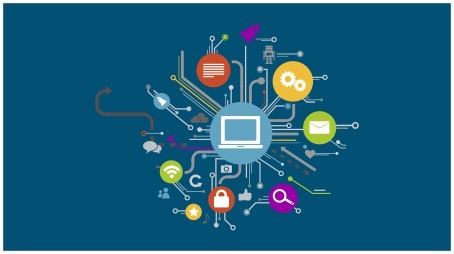5 Engineering Trends to Watch Out For
5 Engineering Trends to Watch Out For

As a result of technological breakthroughs, traditional commercial partnerships are being transformed into the building blocks of digital ecosystems. For businesses that use the correct tools, digital adoption presents huge potential. Full-scale digitization will result in massive annual cost savings worldwide within ten years. Education systems and top Engineering colleges such as the MIT Academy Of Engineering have started to upgrade their curriculum in a manner to understand the emerging technology needs.
Furthermore, in response to the ongoing Covid-19 pandemic, businesses have moved their activities to online platforms, and people have been obliged to adopt work-from-home lifestyles to prevent the virus from spreading further. This blog is dedicated to gaining a better grasp of the engineering trends that will take over in the next few years.
5 Engineering Trends To Watch Out for
Furthermore, the current period of a digital revolution, combined with technological improvements, has pushed different industries closer together, pushing their interdependence further to create a symbiotic interaction throughout multiple sectors. Hence every student who is willing to pursue an engineering degree needs to understand the basic trends of the industry.
Graduates all around the world have been affected by revolutionary industry changes as well as a sharp drop in inaccessible prospects during this time. Here are five emerging trends in the engineering industry which can take over completely within a few years.

1. Digitalization
Many digital technologies, such as digital sensors, mobile devices, BIM, augmented reality, virtual reality, drones, 3D scanning and printing, autonomous equipment, and advanced building, are already being implemented in the Engineering & Construction (E&C) industry. These technological advancements aid businesses in improving their processes and substantially altering the way construction and projects are realized. Businesses must swiftly create strong alliances in order to prepare for a fast-developing collaborative network as the construction sector changes toward cloud-based platforms.
2. Sustainability
We can become more environmentally responsible and resource-efficient by using less energy to keep ourselves comfortable, which is critical for mitigating the effects of climate change. Sustainable building is the key to a better future for the environment. Only by living more efficiently with our resources can we hope to protect our environment and climate. Sustainable architecture is based on the concept of waste reduction. This includes not only reducing physical waste but also reducing energy loss. We require less energy supply in the first place if we can hold the energy we consume within our structures for as long as possible.


3. Artificial intelligence (AI)
AI enables manufacturers to make sense of the massive amounts of data generated by their factories, operations, and customers, and to translate that data into actionable decisions. Currently, 70% of all production data is useless. Producers may orchestrate and simplify business operations from PCs to machines, across department walls and tiers of suppliers, by combining AI with the connectivity of the Internet of Things (IoT). Quality management, predictive maintenance, and supply chain optimization are the most potential immediate applications of AI in production systems. AI-enabled goods will revolutionize customer value propositions, and producers must be prepared to coordinate the value networks required to supply them.
4. Smart Industry 4.0 and Internet of Things
Simply said, smart manufacturing is a production system that can handle difficulties quickly, with structure and responsibility, resulting in a fully integrated, collaborative structure across the supply chain. It ensures a real-time response in order to fulfill ever-increasing client demands and changing supply network conditions. Industry 4.0 refers to the fourth industrial revolution, which is when the concept of smart manufacturing first emerged. Along with IoT, which is an interconnected system connecting devices, mechanical machines, people, and things to help transfer data over a network using UIDs, this smart industry has helped enhance product quality, optimize your asset utilization, and so on (Unique Identifiers).


5. Machine Learning
Machine Learning is an AI application that supplies a system with automatic information about a machine without it being expressly coded previously. In addition, machine learning aids apps in making more accurate predictions. Other than the above mentioned, some of the key sectors now recruiting mechanical engineers are those active in the disciplines of hybrid and autonomous vehicles, data sciences, embedded systems, smart cities and urban analytics, and so on. Mechanical engineering has a bright future ahead of it since various businesses today require professionals with strong analytical skills and a comprehensive awareness of emerging technology to keep up with current trends and set new industry standards.
MIT Academy of engineering being one of the distinguished and top most institutes for engineering education in Pune has started to inculcate the latest trends of the industry in order to help its students understand the requirements of companies in the near future.
To know more about MITAoE, Stay Tuned To Our Website for Weekly Blogs!
